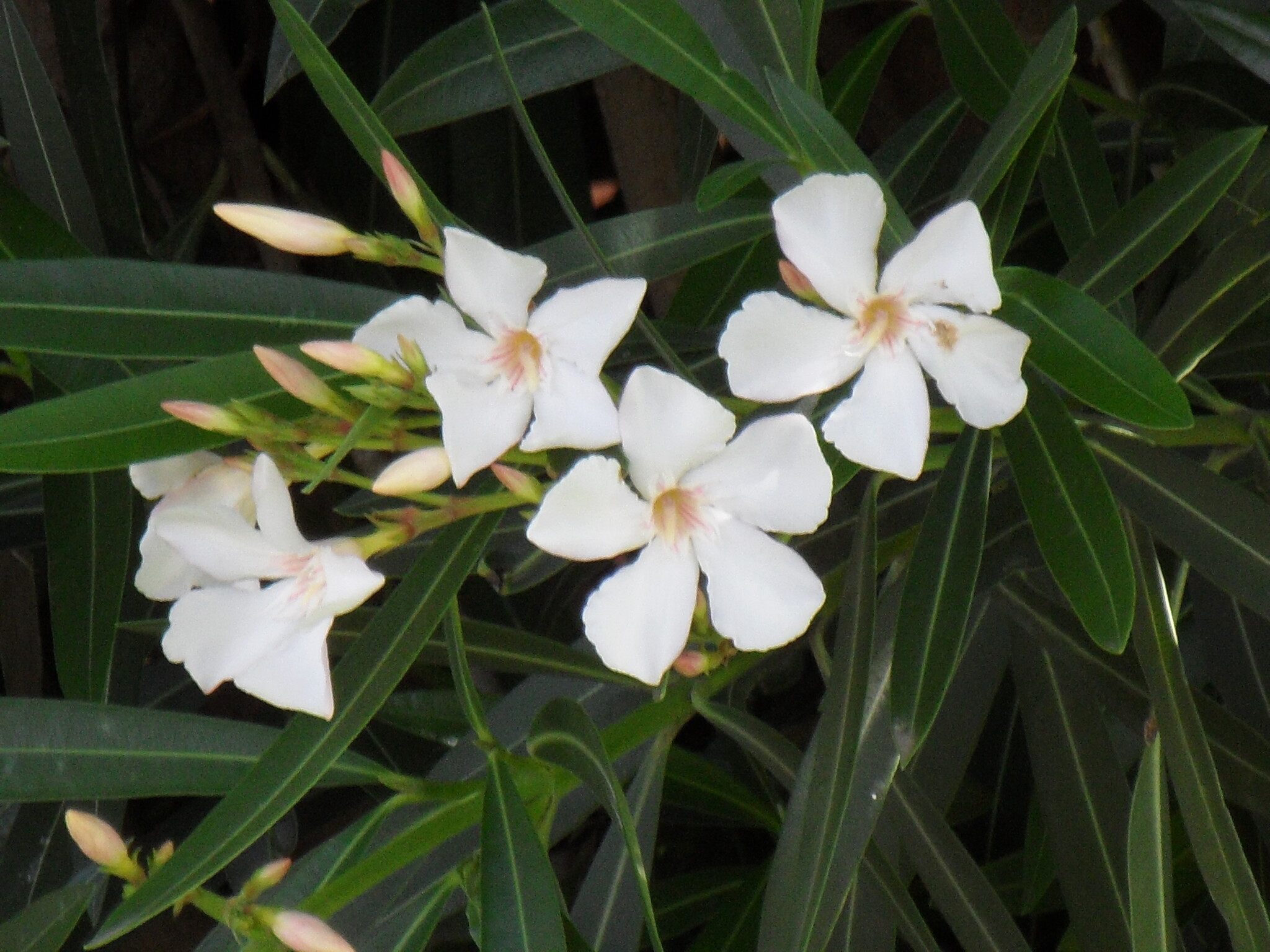
From the Greek neros — humid, alluding to the habitat of the sole species.
Shrubs, evergreen; latex white. Stems woody, without spines. Leaves 3-whorled, stalked; blade well developed; colleters absent at base. Inflorescence terminal, cymose. Flowers more or less scentless, stalked. Corolla funnel-shaped; tube cylindrical; lobes convolute in bud, overlapping to the right. Corolline corona present. Stamens enclosed, attached near middle of tube, converging and sticking to style head, anthers with long hairlike, apical appendages. Disk absent. Fruit a woody follicle, dehiscent laterally; seeds numerous, flattened, oblong, not winged, hairy all over, comose at micropylar end.
Oleanders are widely grown, mostly distributed as unnamed cultivars.
Tolerant of mild frosts.
Cuttings or seeds.
Shrubs, leaves 3-whorled, flowers funnel-shaped, corolla lobes overlapping to the right in bud, anthers with long, narrow, hairy apical appendages.
1 species in the Mediterranean, N Africa and Asia.
Occasionally naturalised in Australia.
Pagen (1987), Eggenberger & Eggenberger (1996), Forster (1996a).
Source: (2002). Apocynaceae. In: . Horticultural Flora of South-eastern Australia. Volume 4. Flowering plants. Dicotyledons. Part 3. The identification of garden and cultivated plants. University of New South Wales Press.
